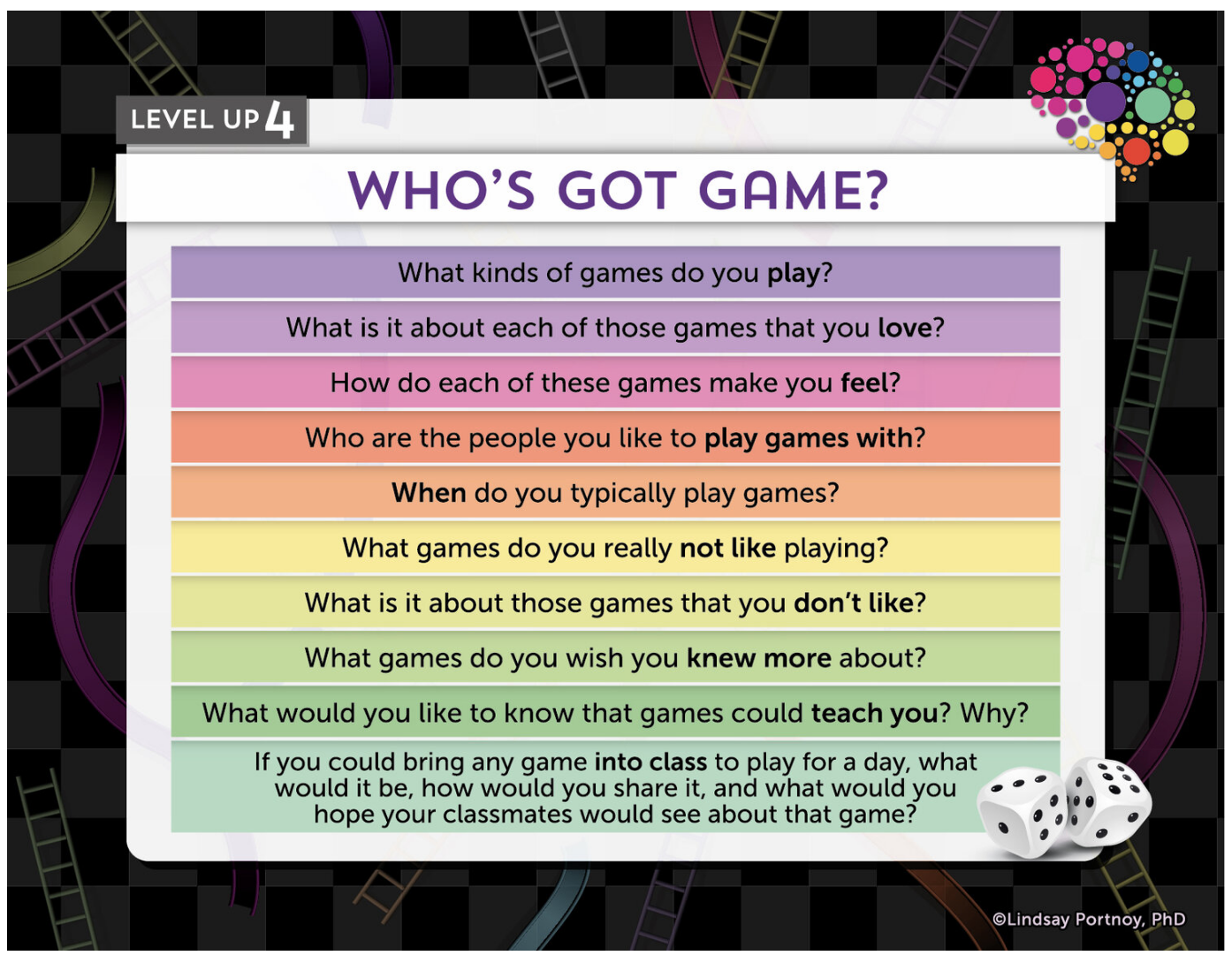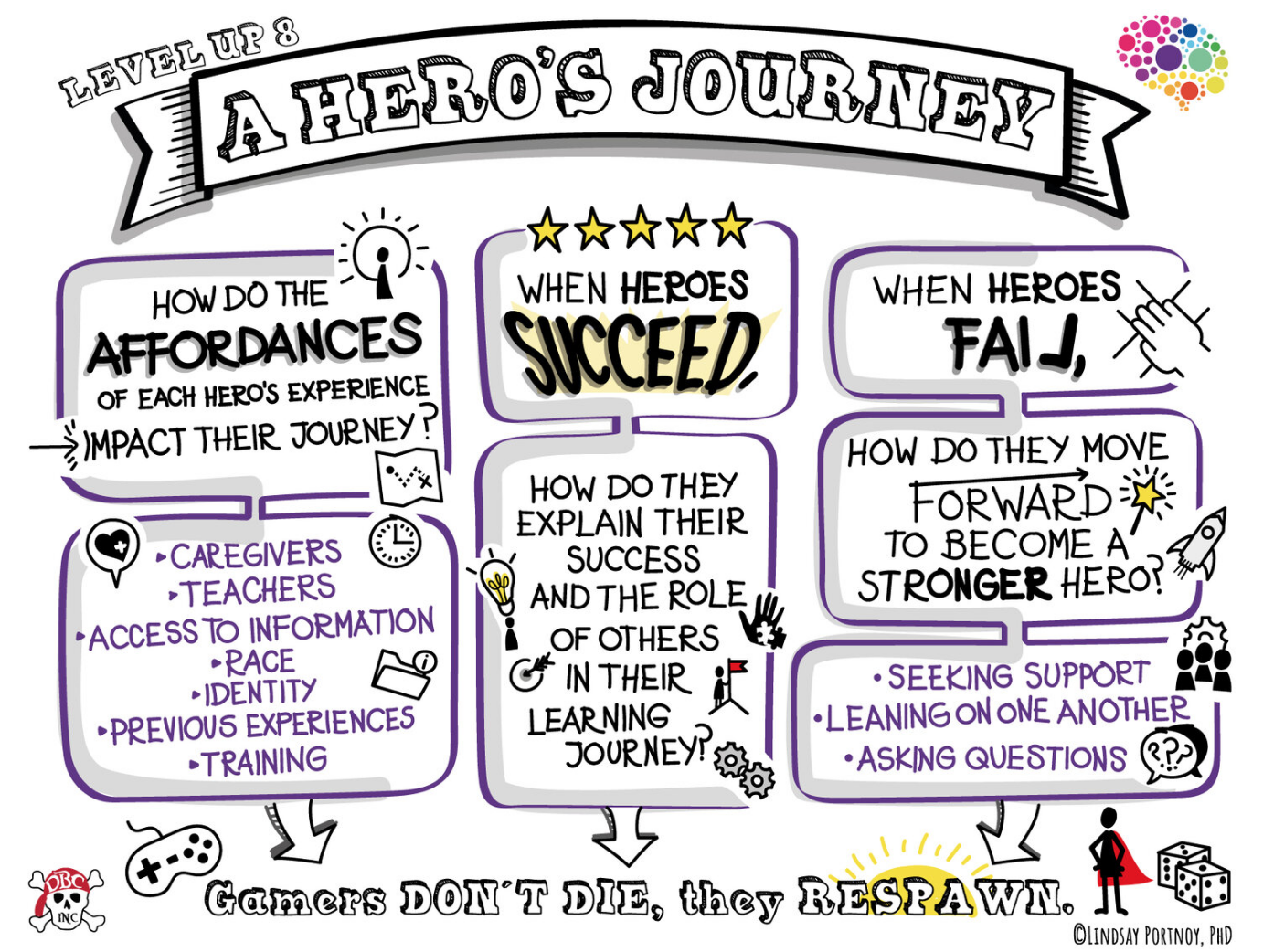Below are designed images from My Book Game On? Brain On! I created for you to use in your space beginning tomorrow
Who’s got game? As you read about how play IS learning, think about how your kids (students, children, or maybe even you) like to play each day. What are the games they choose, what do those games say about who they are and what they love?
Use these questions to achieve superboss level XP. Use this designed document to develop a sense of community into your learning space and give you a birds eye view into what your learners care about most. Download here or click the image.
What’s the goal? “Asking students to define the goal of their play is more than the question of how you win; it’s the question of what matters to each player.”
Moving beyond why to why not, we will level up living and learning by seeing how the rules of the game are made and how they define the ways we engage each day. Download here or click the image.
A Hero’s Journey. Like learning new content or taking on new responsibilities, game play can make us feel more like heroes and other times makes clear the barriers we still need to overcome. The motivation to learn, like the motivation to play, is what we call the hero’s journey.
Use this sketchnote to guide conversations with your learners about the affordances of their gaming experiences, how they move forward if they fail during play, and how they explain their successes in play. Download here or click the image.
Failure is success in progress. In Chapter 4 we reframe setbacks (ahem, failure) as success in progress. The reality is as long as we’re alive we’re learning, and we all have an easter egg to share with the world!
Use this tool to learn more about the players in your class or in your home? What challenges have they recently mastered? What are they currently working on? And what can they share? Download here or click the image.
Learning through collaboration. Chapter 5 makes clear that play is a collaborative sport. The learning that transpires during play is exponentially increased because it is done with others.
Knowing together means growing together, which is why connections are enhanced through collaborative play. Use this tool as inspiration to sow the seeds of empathy through play in your learning space and then celebrate how your learners move from me-centered to we-centered in their learning and lives. Download here or click the image.
Deepening connections through collaborative play. Perhaps the most magical aspect of games is that there is no need for a standalone assessment: the game IS the assessment. That is, if you know what you’re looking for.
Chapter 6 highlights the way learning, practice, failure, and feedback are fuel for working memory and a gift to thoughtful educators and parents. Think of Level Up 16 from #GameOnBrainOn as just a few of the many questions you might ask your kids during play. Download here or click the image.
Roles, representations, and assumptions in play. What happens when you can’t quite pick to play as a character that feels like you? In Level Up 20 of #GameOnBrainOn we ask some tough questions about the roles, representations, and assumptions of play.
Keep the below sketchnote in sight so you can ask your kids during play: whose roles, whose rules? Download here or click the image.
Boss level. The research is clear, learning through play is a win for everyone. So now that you’re in, how can YOU invite more play into each day? It’s time to enter boss level territory. Let your students be your guide as you bravely embark on a new way of learning through purposeful play.
Use these prompts as you set out on your own journey of game design and development, breaking content free from the textbooks and worksheets and into the hands and hearts of our learners through play. Download here or click the image.








